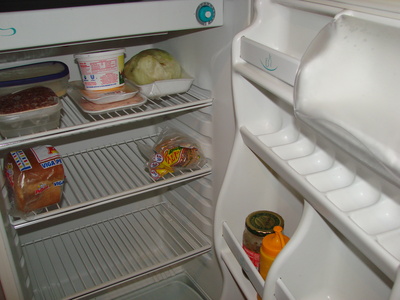
The first heat pump emerged in the 1940s when an American inventor discovered the idea of pumping heat via his freezer in his home. The idea was later furthered by another individual known as Lord Kelvin, and theoretically became a scientific concept. Heat pumps are used in all types of resources including air conditioning systems and refrigerators.
Robert C. Webber, an American inventor, is credited with building the first heat pump during the late 1940s. Webber got the idea for the heat pump by accident when he was experimenting with his deep freezer, and burned his hand after unintentionally touching the outlet pipes of the cooling system. The burning of his hands gave him ideas for the basic mechanics of how he would build the heat pump.
Webber followed multiple steps to create the first heat pump. According to MasterTherm, "He connected the outlet piping from a freezer to a hot water heater and, since the freezer was producing constant excess heat, he hooked up the heated water to a piping loop." Then Webber used a small fan to propel the warm air in the building. After he saw that his invention was successful, he built a full size heat pump to provide heat for his entire home.
In addition to pumping heat from his freezer, Webber decided to pump heat from underground because the temperature hardly fluctuated through out the year. According to Oklahoma State University, "Copper tubing was placed in the ground and freon gas ran through the tubing to gather the ground heat. The gas was condensed in the cellar, gave off its heat and forced the expanded gas to go through the ground coil to pick up another load." Webber used a fan to generate the air into his home. A year later, Webber was satisfied with his invention and sold his old coal furnace.
By 1852, William Thomson (also known as Lord Kelvin) developed the concept of the heat pump. Thomson desired to make his key theoretical prove that heat could flow downhill (from hot to cold). As Thomson developed the device, he did foresee its initial application in buildings for cooling, air conditioners, chillers and refrigerators.
During the 1940s, the heat pump was popular due to its superior efficiency. The pumps efficiency was still useful in the 1970s when the Arab oil embargo sparked conservation awareness and made energy conservation intriguing even though the energy prices were cheap. At that time, a professor at Oklahoma State University named Dr. James Bose, crossed paths with the heat pump concept in an engineering text book. He used the idea of the heat pump to assist a homeowner with their pool. The heat pump was initially dumping scalding water in his pool. Bose adjusted the pump to where it generated the water through the pipes rather than into the pool. Since Dr. Boses' development of his idea, Oklahoma has emerged as the center of ground source heat pump research and development.